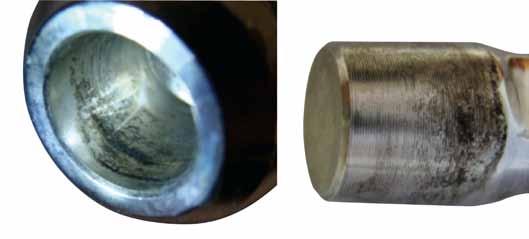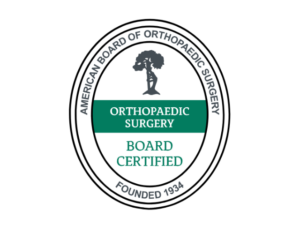Common Symptoms of Corrosion Problems from Metal-on-Metal Implants
In my last blog, I outlined the serious complications associated not only with use of metal-on-metal hip replacement prostheses (a metal ball moving in a metal socket) but also from the metal ions which can be released into the body from corrosion of implant parts where components connect. These include the taper (which is the upper part of the stem) and the metal ball. We are seeing this corrosion problem even more commonly with a new class of modular hip stems where a separate neck piece is connected to the stem.
Many patients who develop problems due to metal ions emitting from metal-on-metal hip replacements may be asymptomatic, at least at first. However, the release and build up of metal ions in the body can affect all of the major organs from the heart to the skin, whether a patient notices right away or develops symptoms months after surgery.
Special blood studies and a MARS (Metal Artifact Reducing Sequence) MRI should be preformed to confirm metal ion levels and evaluate the bone and soft tissues around the hip. The MARS MRI is proving to be a reliable imaging study for these bone and soft tissue evaluations.
An individual’s response to metal debris is extremely varied and unfortunately, we cannot predict who will react and who won’t. Some people may not have a local reaction at the site, but develop symptoms systemically (throughout their bodies). Others develop an ALTR (abnormal local tissue response), either with or without local symptoms, even if they are tolerating a high ion level throughout their bodies without additional symptoms.
Some patients who have been referred to me are aware of developing symptoms. However, many are asymptomatic but were notified by their surgeons that a problem could be developing. Others report never feeling well after the procedure and seem to develop allergy-like reactions to the prostheses. They report that they feel better almost immediately after a hip revision.
I’m told by many patients that they did perfectly after surgery, but six months to a year later began to experience discomfort or difficulty accomplishing tasks they easily could manage before. Most try to ignore the symptoms at first, relegating them as normal or still part of the healing process.
Below I’ve listed some of the most common complaints I’ve heard from patients who experienced complications either locally or systemically from elevated metal ion levels:
- Difficulty getting in and out of a car and having to use their arms to lift the leg
- More difficulty climbing stairs or stepping up onto a curb
- Some stiffness and discomfort when they first stand from a seated position and try to walk
- Discomfort lying on the replaced hip
- Incision sensitivity
- Rash overlying the area around the replaced hip
- Pressure or fullness in the hip, or a lump
- Increased difficulty in bending to tie or put on shoes
- Acne and rashes on other parts of the body: one of my patients told me he felt as if he were back in high school because he was developing acne. Another man grew a beard to try and hide his acne.
- Forgetfulness and more difficulty concentrating
- Poor endurance and/or chronic fatigue
- Anxiety
I cannot stress strongly enough that even if patients with metal-on-metal hip components are completely asymptomatic, they should follow up with their surgeons and have the appropriate tests to see if they are developing an ALTR. If an ALTR is developing, and too much damage has occurred to the muscle and soft tissue around the hip, it may not be repairable. I also think it is important for patients to find out if their type of implants are performing well in general or resulting in an increased incidence of failure.
In the sage words of Benjamin Franklin, “An ounce of prevention is worth a pound of cure.” Never was this more true than for patients who have hip prostheses which may be giving off excessive metal ions. My advice is to obtain baseline studies, even if asymptomatic, and repeat these studies periodically. I think it is important to find out all you can and then make an intelligent decision based on facts.







Have you found any solutions for the metalossis….have had a corroded ball and socket replaced with ceramic, but have been told I have metal, or ions, in the tissue around the hip.
HI Carol,
The treatment is to remove the prosthesis that is causing the underlying problem, so that high metal ions in your blood have a chance to decrease and normalize over time. At time of revision, your surgeon will remove tissue around the hip which appears abnormal. This tissue will have a high, local concentration of metal ions. Unfortunately, it is not possible to remove all of the metal ions, either in the local tissue around the hip or in other tissues around the body. The hope is that by eliminating the metal ion source and decreasing the local concentration, any systemic symptoms will resolve and any abnormal local tissue responses will quiet down. The goal is that with time, ions that remain in the tissues will continue to decrease as they enter into the body’s circulation and are cleared.
Thank you,
Dr Leone